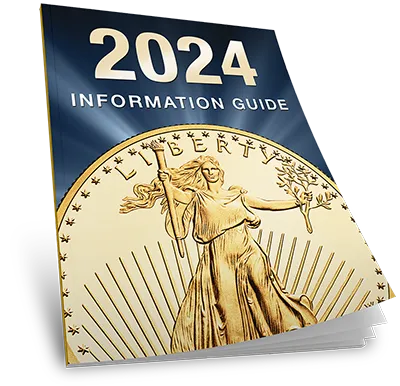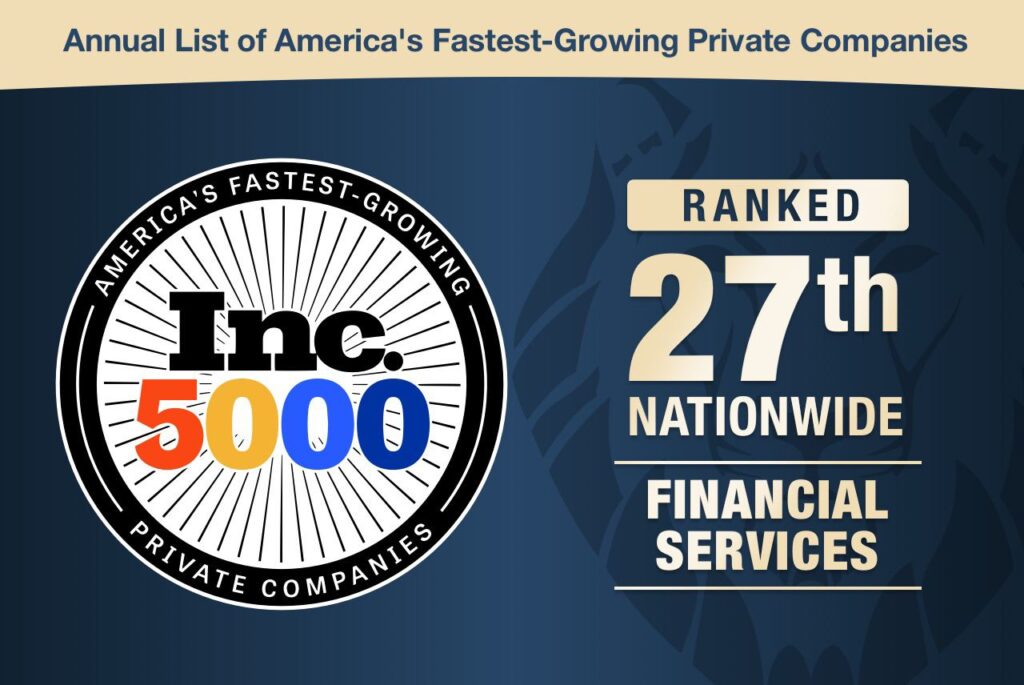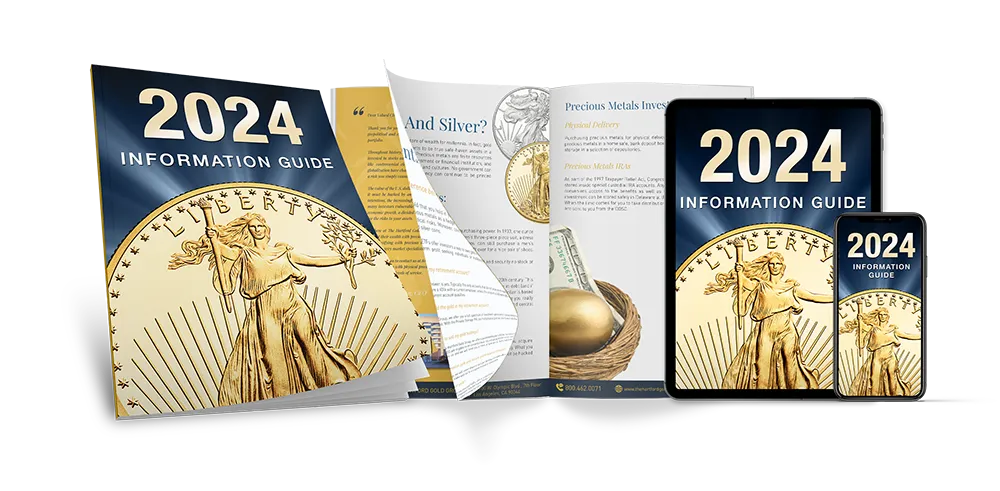Throughout 2023, we witnessed a notable rise in interest rates, a trend that sparked conversations and concerns alike. As we take a deeper look into this shift, it’s crucial to unpack the various factors contributing to this increase and explore whether these rates will drop soon. Let’s dive into when the interest rates might decrease.
What Are Interest Rates?
Interest rates are the cost of borrowing money, expressed as a percentage. When you hear about interest rates in the news, it’s often about the rates set by the Federal Reserve (the Fed), the central bank of the United States. These rates influence what banks charge each other for overnight loans, but they also ripple out to affect all sorts of loans, from mortgages to credit cards.
Regarding personal finance, interest rates directly impact how much you pay for a loan. For instance, in the housing market, mortgage rates determine the monthly payment on your home loan. A higher rate means you’ll pay more over the life of the loan, while lower rates can save you money.
Mortgage lenders set their rates based partly on the federal funds rate set by the Fed. When the Fed raises rates, borrowing generally becomes more expensive. This affects homeowners looking to refinance or secure a fixed-rate mortgage and homebuyers seeking an affordable home loan.
Interest rates are an important tool for monetary policy. By adjusting these rates, the Federal Reserve can influence economic activity to keep inflation in check and stabilize the job market. For example, in response to the pandemic, the Fed cut rates to near-zero to support the economy, which led to historically low mortgage interest rates.
In sum, interest rates are a crucial factor in the cost of borrowing money. They have broad implications for the economy and individual financial decisions, from choosing a mortgage to managing credit card debt. Whether you’re a first-time homebuyer, a homeowner looking to refinance, or an American managing personal finances, understanding interest rates is essential for making informed decisions.
Why Is Interest Important?
Interest is vital in finance and economics, playing several key roles affecting the broader economy and individual financial decisions.
For lenders, be it banks or mortgage lenders, interest is a reward for the risk they take in lending money. It’s their incentive to provide loans for everything from buying a home to starting a business. Without the prospect of earning interest, these institutions would have little motivation to lend money, which would significantly hamper economic growth.
From a borrower’s perspective, such as homeowners or prospective homebuyers, interest is the cost of accessing funds they don’t currently have. It allows people to buy homes, access home equity, finance education, or invest in opportunities that might otherwise be out of reach. Mortgage rates, a type of interest rate for home loans, directly influence the affordability of purchasing real estate and impact the monthly mortgage payment.
Interest rates also serve as a critical tool for the Fed in steering the U.S. economy. The Fed can influence economic activity, inflation, and employment levels by adjusting interest rates. Lower rates can stimulate borrowing and spending, leading to economic growth, while higher rates can help cool off an overheated economy and curb inflation.
Additionally, interest rates have implications for personal finance beyond loans. They affect the returns on savings accounts and investments. When rates are high, investors earn more from their deposits and assets, while low rates can prompt consumers to spend or invest in riskier assets for better returns.
In essence, interest is the linchpin that connects the individual’s aspirations to the economy’s broader mechanisms. It balances risk and opportunity, influences the housing market and homeowners’ decisions, and is a pivotal factor in the Federal Reserve’s management of the country’s economic health. Whether you’re refinancing a mortgage, managing credit cards, or considering a new home loan, understanding the importance of interest is key.
What Factors Impact Interest Rates?
Several factors can influence interest rates, shaping borrowing and lending in the U.S. economy:
Federal Reserve Policies
The Fed is essential in setting interest rates. Through its monetary policy decisions, notably the setting of the federal funds rate, the Fed aims to control inflation and stabilize employment. When the Fed adjusts this benchmark rate, it indirectly affects mortgages, home prices, credit card interest, and loan rates.
Economic Indicators
Various economic indicators, like inflation, unemployment, and GDP growth, also impact interest rates. High inflation typically leads to higher interest rates as lenders need to compensate for the decreased purchasing power of future payments. Conversely, the Fed might lower rates during an economic slowdown to encourage borrowing and stimulate growth.
Market Demand and Supply
The principles of supply and demand also apply to the money market. Interest rates will rise if there’s a high demand for credit but a limited supply of money. On the other hand, if there’s an excess of funds but less demand for borrowing, rates will typically fall.
Global Economic Conditions
The U.S. economy doesn’t exist in a vacuum. International economic events, such as financial crises in other countries or significant shifts in global markets, can influence U.S. rate hikes. The Fed and other policymakers closely monitor these international factors.
Government Debt
The national debt levels and borrowing requirements can influence interest rates. When the government borrows more, it might drive up interest rates due to the increased demand for credit.
Consumer Behavior
Consumer confidence, credit score, and spending habits can also play a role. If consumers are spending and borrowing more, it can lead to higher interest rates. Conversely, if they’re saving more and borrowing less, this can contribute to lower rates.
Understanding these factors is critical, especially for potential homebuyers eyeing mortgage rates, homeowners considering refinancing options, or anyone involved in personal finance and real estate. The interplay of these elements dictates the cost of borrowing and the returns on savings, shaping decisions in the housing market and beyond.
What Are the Current Interest Rates?
Here’s a detailed look at the current rates as of April 05, 2024:
30-Year Fixed Mortgage Rates
The average rate sits around 7%. This is significant for homeowners and homebuyers considering long-term financing options. A 30-year fixed mortgage offers stability in payments, but the current rate, being on the higher side, could impact the overall affordability and monthly payments for new borrowers.
15-Year Fixed Mortgage Rates
At an average of over 6%, the 15-year fixed mortgage rates are lower than their 30-year counterparts. These mortgages appeal to homeowners looking to refinance or pay off their homes faster. A lower total interest cost over the life of the loan offsets the higher monthly payment.
5/1 Adjustable Rate Mortgage (ARM)
The average interest rate for a 5/1 ARM is over 6%. This type of mortgage typically offers lower initial rates than fixed mortgages, making it an attractive choice for certain borrowers. However, the rate adjusts after the first five years, which can lead to higher future payments if interest rates rise.
Federal Funds Target Rate
In November of 2023, the federal funds target rate was set between 5.25% to 5.5%. This rate is a crucial benchmark in monetary policy, impacting everything from consumer loans to savings accounts. The Federal Reserve adjusts this rate in response to economic conditions, aiming to balance economic growth with inflation control.
Are Mortgage Rates on the Rise?
Mortgage rates have been rising, closely watched by homebuyers, homeowners, and industry experts alike. This uptick, particularly noted in the average rates for 30-year and 15-year fixed mortgages, is attributed primarily to the Fed’s recent monetary policy shifts.
The Fed has been implementing rate hikes in response to the economic situation post-pandemic. These actions, aimed at controlling inflation, directly influence the federal funds rate, which impacts mortgage rates offered by mortgage lenders.
The relationship between the Fed’s policies and mortgage interest rates is critical, as even a tiny percentage point increase can significantly affect a homeowner’s monthly mortgage payment and overall loan amount.
For homebuyers, especially first-time homebuyers, these higher rates can challenge affordability, making it more expensive to secure a home loan. The increase in mortgage rates also affects the refinancing market.
Homeowners looking to refinance their existing mortgages for lower rates or to tap into home equity might find the conditions less favorable than during the low-rate environment experienced during the pandemic.
The housing market, closely monitored by organizations like the National Association of Realtors and the Mortgage Bankers Association, feels the impact of these rising rates. Higher mortgage rates can cool down home sales, as potential buyers may find current mortgage rates less attractive, leading to a slowdown in home sales and possible stabilization or decrease in home prices.
Looking ahead, mortgage rate forecasts by entities like Fannie Mae and Freddie Mac suggest that rates could continue to fluctuate.
Those in the market for a new home or who are considering refinancing must stay informed about the latest mortgage rate predictions. With the possibility of continued rate hikes by the Fed, borrowers must assess their credit score, down payment options, and the type of mortgage that best suits their needs, whether it’s a fixed-rate mortgage or an adjustable-rate mortgage.
What Is the Mortgage Rate Forecast?
As we look ahead, economists, policymakers, and potential borrowers are keenly interested in the mortgage rate forecast. Given the current economic landscape and the actions of the Federal Reserve, predictions suggest a continued fluctuation of mortgage rates.
Economic experts closely monitor factors influencing future rates. These factors include the Federal Reserve’s ongoing adjustments to the federal funds rate in response to inflation, economic growth, and global economic conditions.
The Fed’s monetary policy, particularly in response to the pandemic’s economic impact, has been a driver in recent rate changes, and their future decisions are expected to continue this trend.
The consensus among chief economists is that if inflation remains a concern, the Federal Reserve may continue with its rate hikes, which could lead to higher mortgage rates. This would impact the housing market by potentially cooling down home sales and affecting affordability for homebuyers, especially first-time homebuyers.
However, some considerations could lead to a stabilization or even a decrease in rates. Economic uncertainties could prompt the Fed to adjust its domestic and global approach. If economic growth shows signs of slowing or if there are significant disruptions in the financial markets, we could see a shift in policy that might result in lower mortgage rates.
Staying informed about the mortgage rate forecast is important for those looking at the housing market. The trajectory of rates will impact monthly payments, overall loan costs, and decisions about fixed-rate versus adjustable-rate mortgages.
While the current forecast suggests a trend toward higher rates, the economy is constantly changing. Potential borrowers should watch announcements from the Federal Reserve, reports from mortgage lenders, and analyses from financial experts to make the most informed decisions about their mortgage options in the coming months.
How Are Adjustable-Rate Mortgages and Fixed-Rate Mortgages Different?
Adjustable-rate mortgages (ARMs) and fixed-rate mortgages offer distinct approaches to home financing, catering to different situations in the real estate market.
Adjustable-Rate Mortgages (ARMS)
ARMs usually start with lower interest rates than their fixed-rate counterparts, making them initially more affordable. However, the catch with an ARM, like the famous 5/1 ARM, is that the interest rate adjusts over time based on market benchmarks such as the 10-year Treasury.
This means that while the initial payments are lower, they can increase or decrease in the future, depending on market conditions.
Fixed-Rate Mortgages
In contrast, a fixed-rate mortgage maintains the same interest rate throughout the loan’s lifespan, which can range from 10 to 30 years, with the 30-year fixed-rate mortgage being particularly prevalent. This consistency ensures that the homeowner’s monthly mortgage payments remain unchanged, offering financial stability and predictability, which is particularly valuable in a volatile interest rate environment.
The choice between these two types of mortgages hinges on the borrower’s circumstances and plans. ARMs are often preferred by those who plan to move or refinance before the rate adjusts or anticipate a rise in income, while fixed-rate mortgages are favored by those seeking long-term stability and a fixed monthly payment.
Is One a Safer Financial Choice Than the Other?
Whether an adjustable-rate mortgage (ARM) or a fixed-rate mortgage is a safer financial choice depends on individual circumstances and market conditions. ARMs offer lower initial rates and suit those with short-term housing plans or expecting income growth, but they carry the risk of future rate increases.
On the other hand, fixed-rate mortgages provide stability with consistent monthly payments, making them ideal for long-term planning, especially in a rising interest rate environment. Ultimately, the safer option varies with each borrower’s risk tolerance, financial stability, and housing goals, making it crucial to weigh personal and market factors before deciding.
How Long Will It Take for Interest Rates To Drop?
Predicting the exact timing of interest rate drops is challenging, as it hinges on various economic factors and policy decisions. The Federal Reserve’s monetary policy, geared towards controlling inflation and stabilizing the job market, plays a pivotal role. If inflation eases and economic growth stabilizes, the Fed might consider lowering rates.
However, these decisions influence global economic conditions, government debt, and market demand and supply. The central bank’s actions are typically gradual and responsive to ongoing economic indicators. For potential homebuyers and homeowners, this means closely monitoring economic trends and Federal Reserve announcements for insights into future rate movements.
How Can You Get the Best Mortgage Rate?
Securing the best interest rates often involves a combination of good timing, a strong credit score, and shopping around. A higher credit score demonstrates financial reliability, which can qualify you for lower rates. Comparing offers from multiple lenders is key as rates and terms can vary significantly.
Additionally, timing your loan or refinance when historically low rates can lead to substantial savings. Larger down payments can also result in more favorable rates for those looking at mortgages. Staying informed about market trends and the economic factors influencing rates, like Federal Reserve policies, can help you make a well-timed and cost-effective decision.
How Can You Safeguard Your Personal Finances During Rising Interest Rates?
Safeguarding your personal finances during rising interest rates involves a few key strategies. Prioritize reducing high-interest debt, particularly from credit cards, as increased rates can amplify the cost of this debt. Consider locking in fixed-rate loans for stability, especially if you have adjustable-rate debts.
Boosting your savings and emergency fund can provide a buffer against potential financial strains. If you’re a homeowner with a mortgage, exploring refinancing options could be beneficial, especially if you can secure a lower fixed rate. Staying informed about interest rate trends and adjusting your budgeting and financial planning accordingly can help you navigate the challenges of a rising rate environment.
The Bottom Line
Understanding and navigating the complexities of interest rates — whether you’re a homebuyer, homeowner, or simply managing personal finances — is crucial. From choosing the right mortgage type to adapting your financial strategies in response to rising rates, informed decision-making is vital.
As you seek stability in these fluctuating times, consider diversifying your assets with precious metals. American Hartford Gold offers a range of options to purchase gold and silver, providing a hedge against inflation and economic uncertainty.
Explore how American Hartford Gold can help secure your financial future in these turbulent times.
Sources:
Current Mortgage Rates: Compare Today’s Rates | Bankrate
Current Mortgage Rates | Forbes Advisor
Forces That Cause Changes In Interest Rates | Investopedia
Fixed vs. Adjustable-Rate Mortgage (ARM): What’s the Difference? | USA Today
Mortgage Financing and Reliable Housing Information | Fannie Mae






